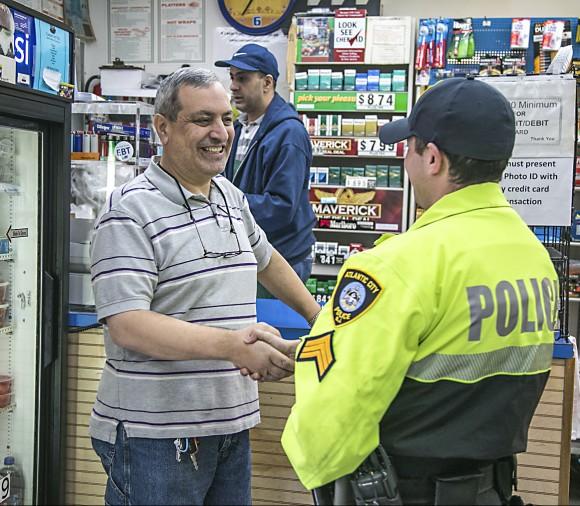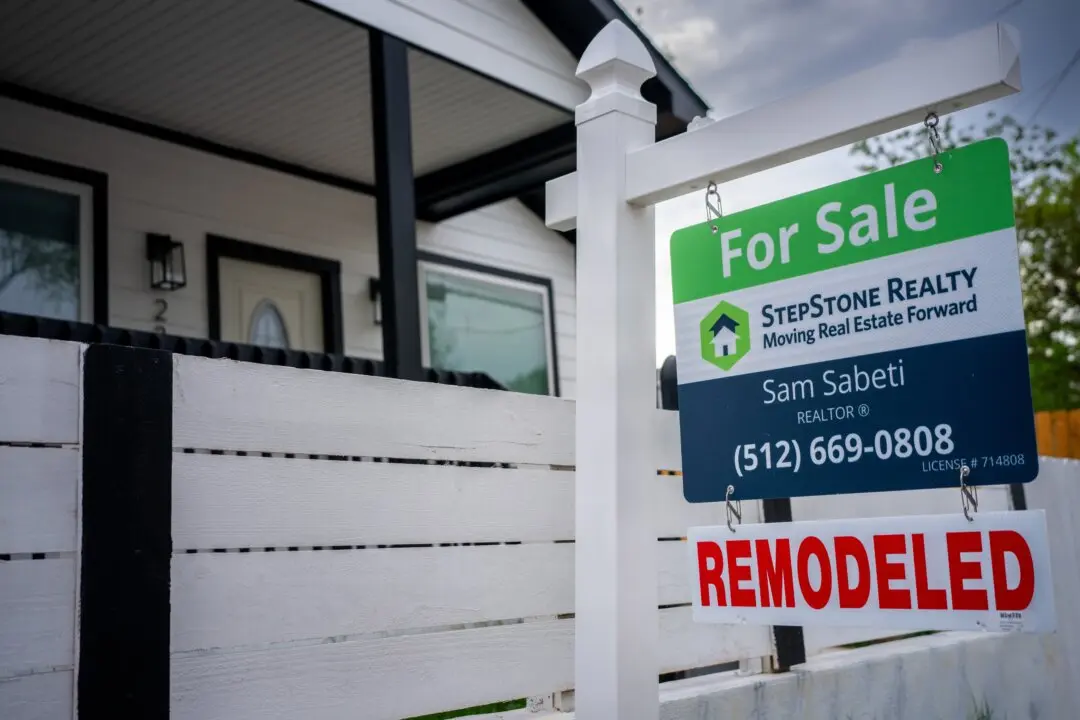ATLANTIC CITY, N.J.—Standing in his varicolored deli, Nael Zumot sported a broad smile as he shook the hand of his local patrol officer.
“They do an excellent job,” Zumot said. “Within two weeks, we see a lot of improvement.”

An Atlantic City Police Officer greets a manager of a deli on Atlantic Avenue as they make their rounds of visiting local stores in Atlantic City, N.J., on Feb. 15, 2017. Benjamin Chasteen/Epoch Times





